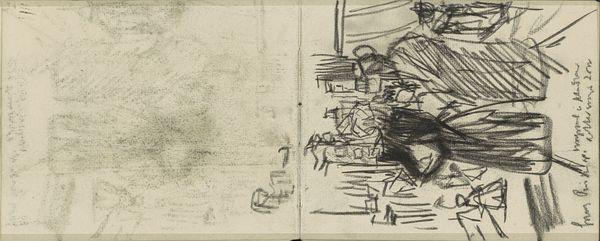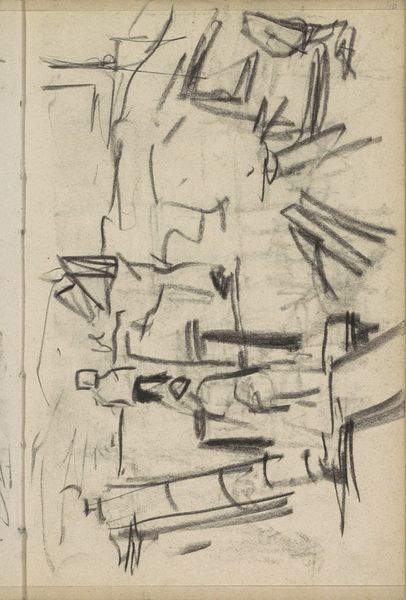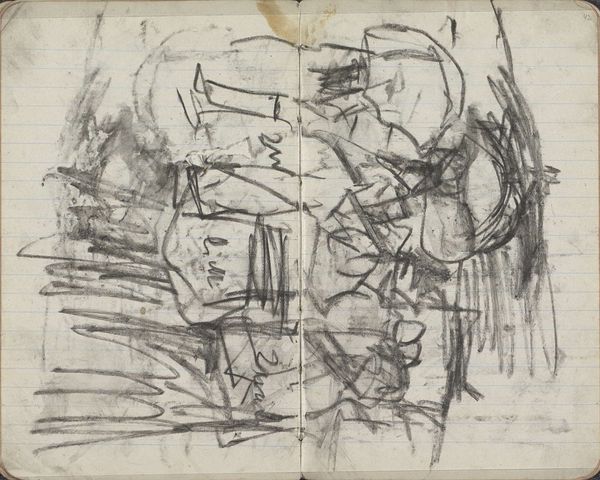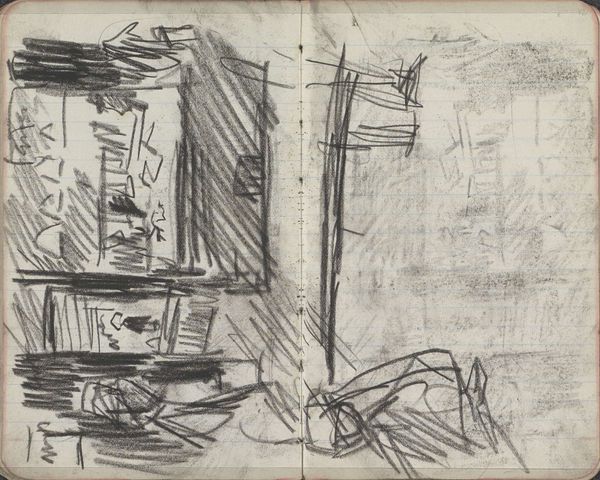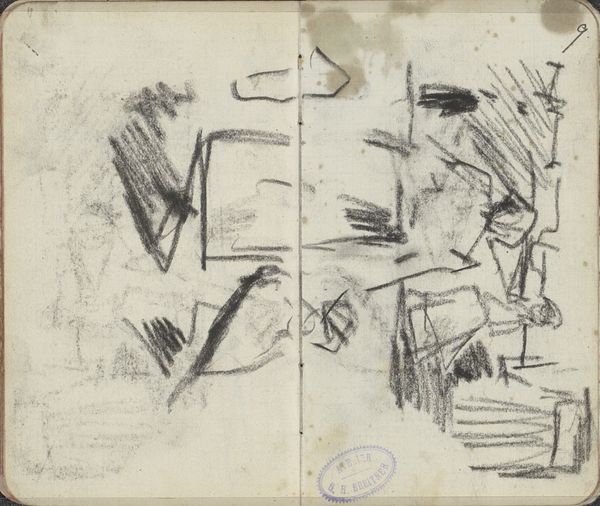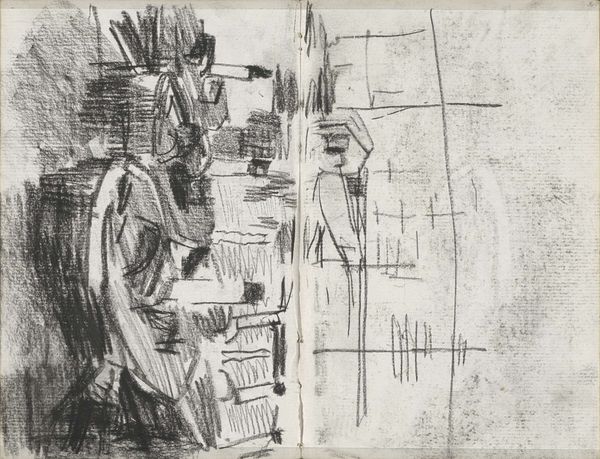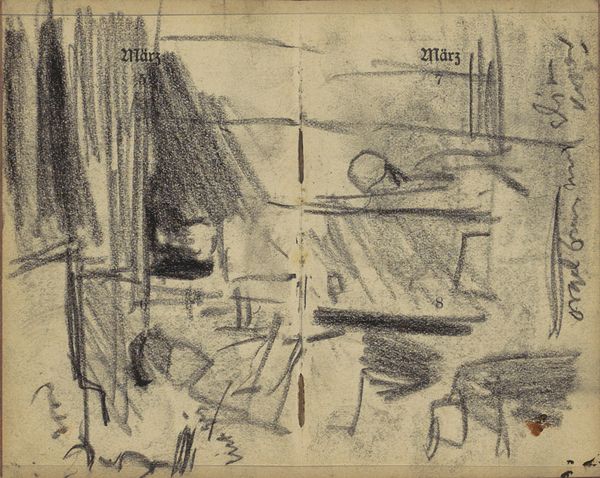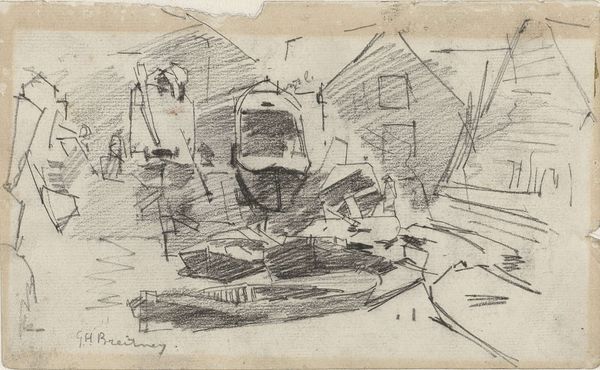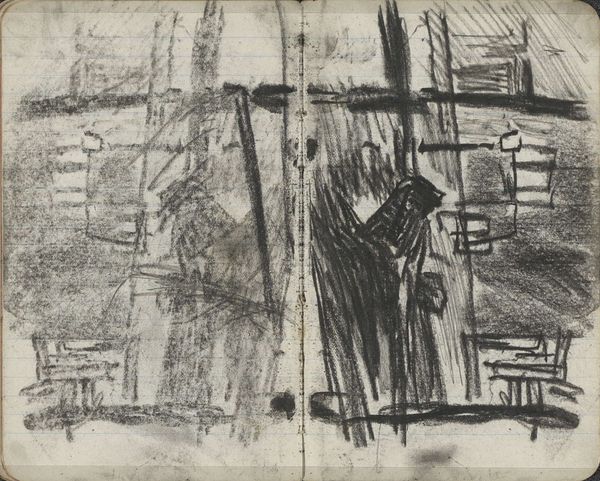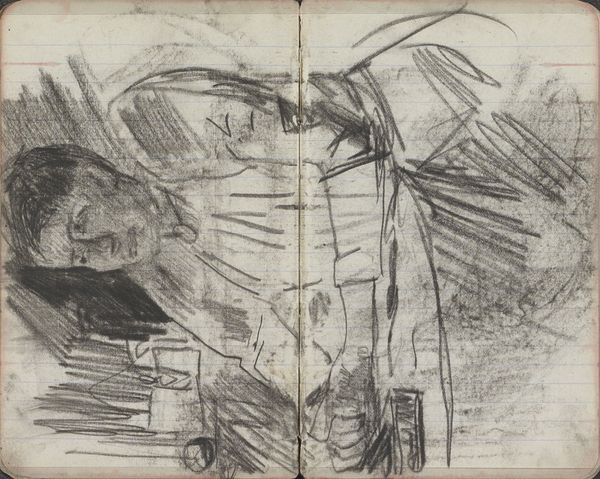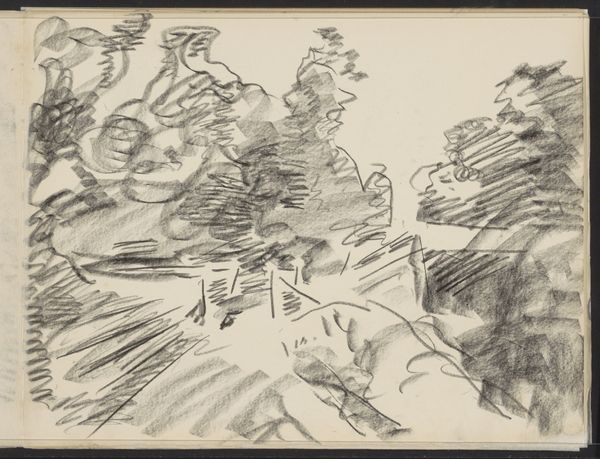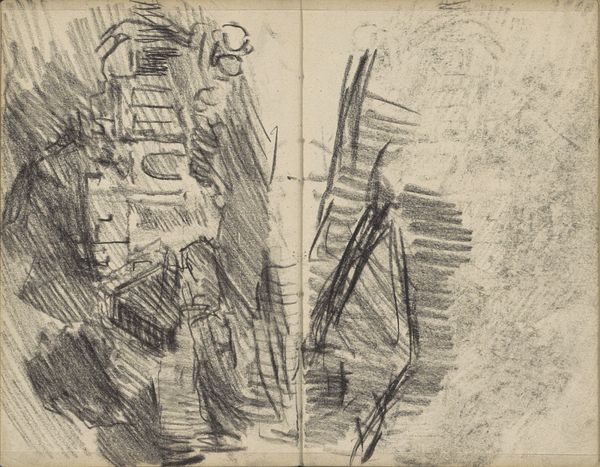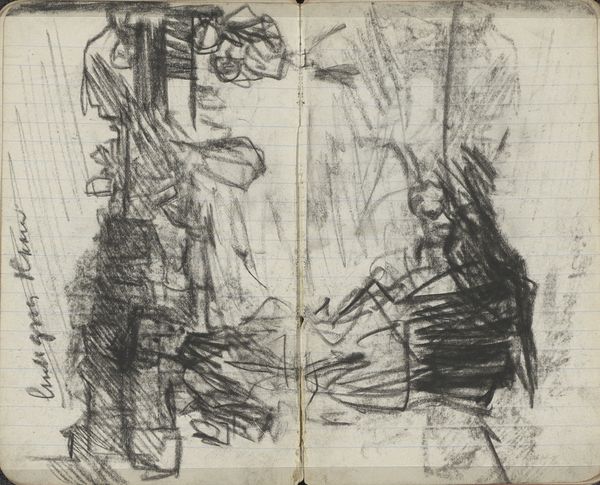
Figuren in een café bij de Vissteeg te Amsterdam 1893 - 1898
0:00
0:00
georgehendrikbreitner
Rijksmuseum
Copyright: Rijks Museum: Open Domain
Curator: This is "Figuren in een café bij de Vissteeg te Amsterdam," a pencil and pen drawing by George Hendrik Breitner, created between 1893 and 1898. Editor: My initial impression is one of intimate observation, almost voyeuristic. It's sketched, fleeting, and seems to capture a genuine, unposed moment in the humdrum of daily life. Curator: Indeed. Breitner was keen on portraying everyday life in Amsterdam, and this drawing reflects that interest. His work challenges the romantic notions often depicted in art, choosing instead to show the world as it truly was for the common person. The café culture, specifically, became a subject of scrutiny. Editor: Formally speaking, I am immediately struck by the dynamic use of line. Notice how the varying thickness and direction of the lines suggest form, shadow, and even atmosphere. The perspective, though roughly indicated, successfully places us within the bustling environment of the café. Also observe how the division between the two sketchbooks serves to separate subjects into unique environments. Curator: And it is worth thinking about how this method diverges sharply from traditional academic paintings, which aimed for idealized portrayals of subjects. Instead, Breitner captured moments as they happened. He’d photograph or quickly sketch subjects, preserving that first, impressionistic glance. Consider what impact photography has had on such representational method. Editor: Precisely. The sketch-like quality echoes the impressionistic aesthetic, valuing the immediacy of perception over meticulous detail. I wonder, do the formal decisions about composition suggest anything specific about the psychological states or social dynamics between figures? Curator: I interpret these visual strategies as his statement on the social atmosphere of late 19th century Amsterdam: casual but critical. Cafés were more than places to eat and drink; they were social hubs and reflections of societal stratifications. Breitner captures a specific social class, a demographic often overlooked, rendering his piece socially important in understanding Amsterdam’s class and economic state at the time. Editor: An insightful perspective! By looking beyond the purely visual, we see how deeply intertwined are the politics of imagery and social structures, all condensed in this quick pencil sketch. Curator: Indeed, exploring the intrinsic and the extrinsic allows for richer insight to the piece’s impact and importance. Editor: Absolutely! And now, armed with historical context and closer scrutiny, I perceive the artwork as all the more poignant. Thank you.
Comments
No comments
Be the first to comment and join the conversation on the ultimate creative platform.
